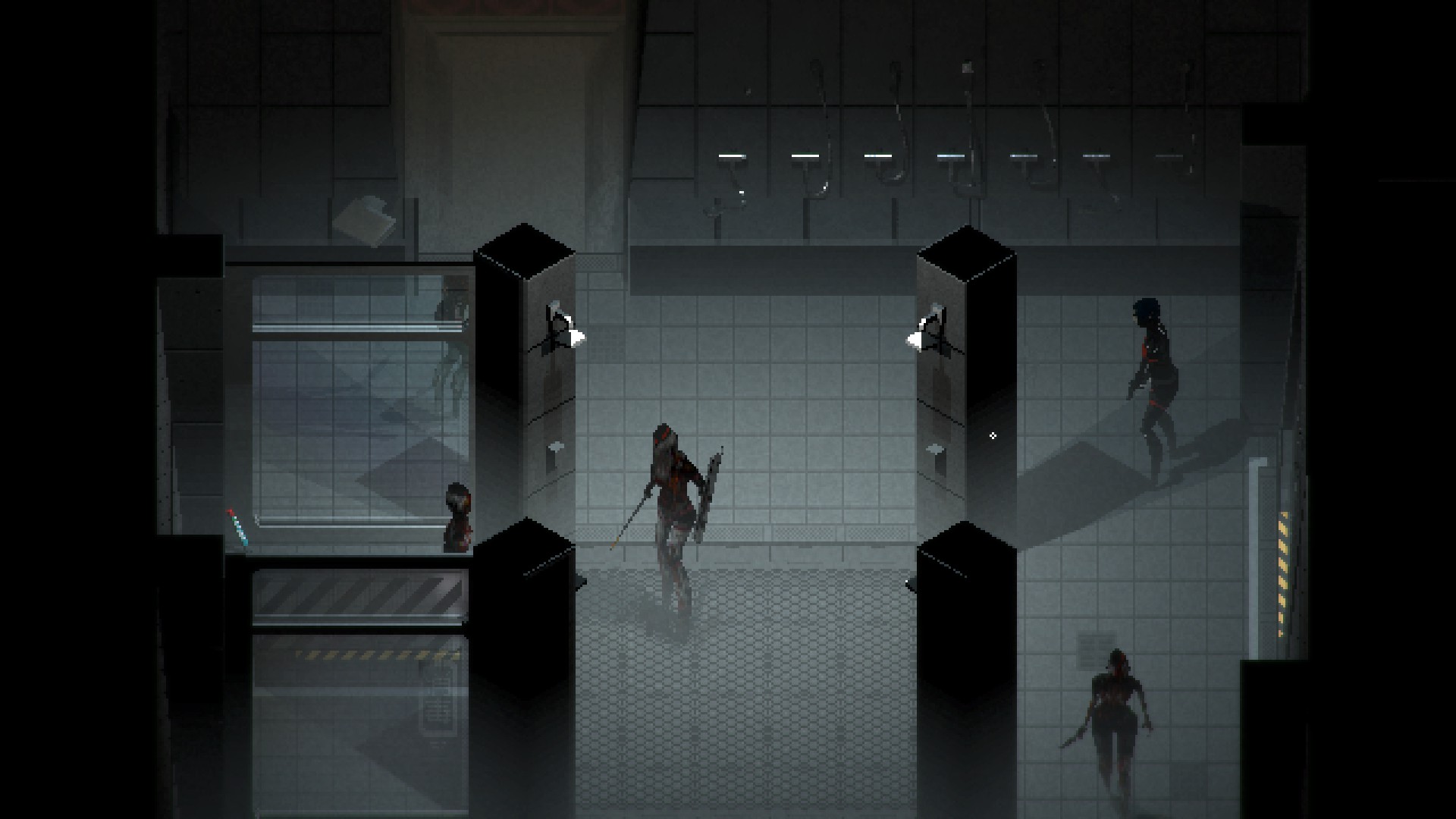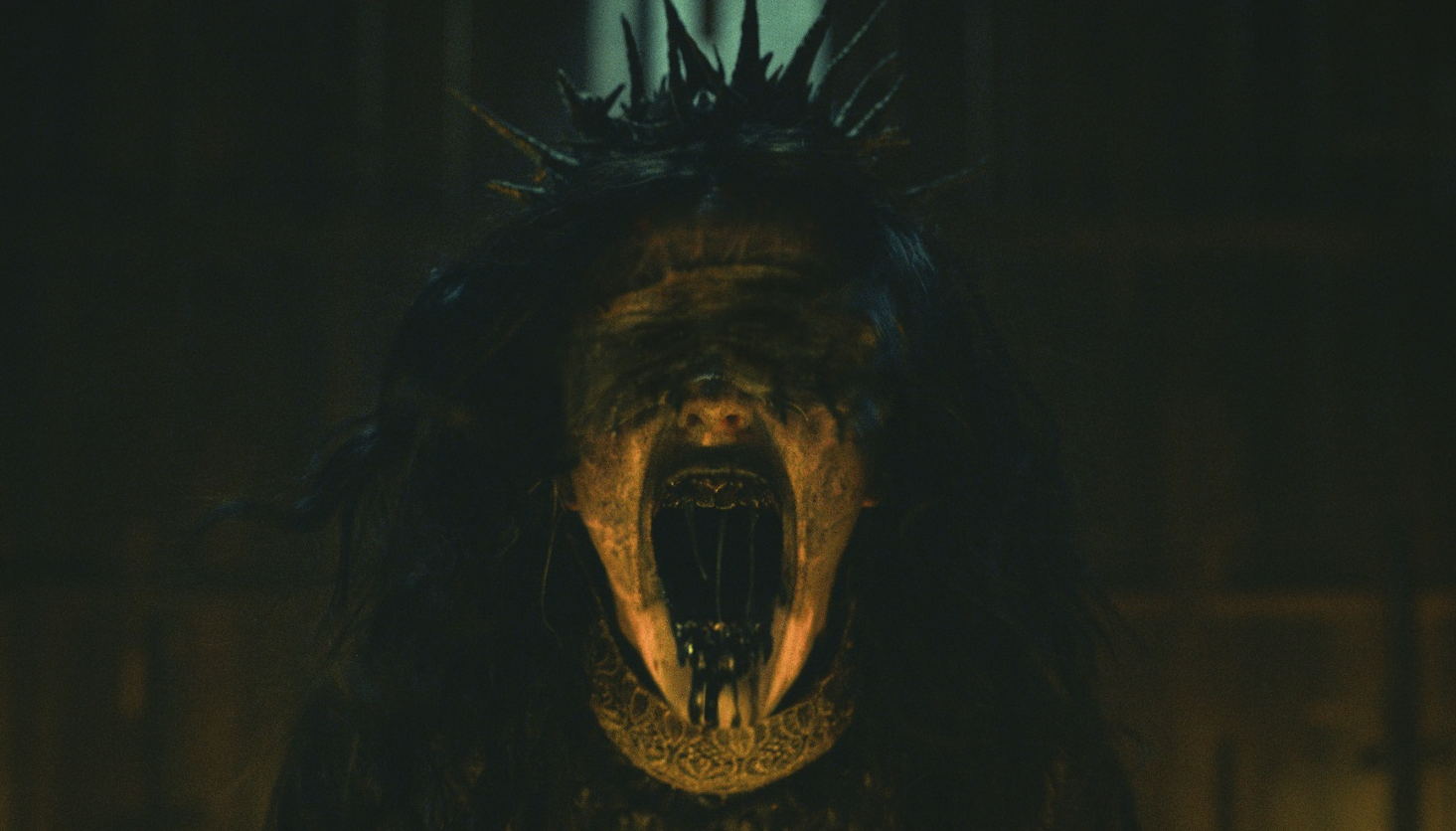Reviews
‘Signalis’ Review – A Puzzle Box of a Survival Horror Game

I should probably establish my biases up front: there was never much of a chance that I wouldn’t like Signalis. I’m a long-time survival horror nerd and it’s a deliberately old-school survival horror game. If you ever hear anyone ask who this game was made for, tell them it was me.
It’s not at all what I expected, though. The trailers, and the PAX West demo I played in September, make Signalis look like it’s just a straightforward homage to the survival horror games of the late ’90s, e.g. Them and Us or Tormented Souls.
That’s not a bad 25-words-or-less description of Signalis, but it doesn’t tell the whole story. There’s a deliberate surreality to the game’s storyline that’s stuck with me for a couple of weeks now. The deeper you get into Signalis, the more it feels like it’s unraveling around you, as it progresses from a hard science fiction story into someone else’s unsettling dream.
Signalis is set in the distant future, in a solar system controlled by the authoritarian Republic of Eusan. You play as LSTR-512, or “Elster,” a technician on the starship Penrose, which is on a mission to search for inhabitable planets. Elster is also a Replika: an artificial human that was built and programmed to do her job, with little capacity for personal initiative.
At the start of the game, Elster wakes up to discover that the Penrose has crashed on an ice-covered planetoid on the edge of the system. Her only crewmate, the ship’s pilot, has gone missing. Elster, in order to keep an unspecified promise she made to that pilot, sets out to find her.
The closest settlement on the planetoid is a mining colony, and Elster quickly discovers that it only looks abandoned. A strange disease broke out here, which sickened humans and turned most of the local Replikas into monsters.
I’m leaving out a few crucial details of Signalis‘s story on purpose. I know at least some of this information is already out there in other sites’ previews, but I was able to go into the game almost totally cold and I got a lot out of that. It’s worth doing that yourself if you can.
That being said, if you’re a fan of classic horror, you’ll have a solid idea of what’s happening in Signalis in the first 15 minutes, or by the end of its demo. I’d go so far as to say that you’re going into the game at an advantage, as some parts of its story are only explained via cultural reference.
(Signalis also has a fun Eternal Darkness-style twist about two-thirds of the way through. You’ll know it when you see it. You’ll also be able to tell when someone fell for it, because they’ll probably be mad about it on Twitter or Reddit.)
As Elster, you’re out to explore the mining colony in search of weapons, answers, and your missing crewmate, despite much of the facility being haunted by corrupted Replikas that will attack you on sight.
Signalis features a fairly mundane assortment of weapons like a pistol, shotgun, and SMG, with scarce amounts of bullets available for each. You can often sneak by enemies without a fight, or take them out with a few well-placed bullets, but most of Signalis‘s enemies don’t stay dead.
Unless you incinerate a corrupted Replika with a flare, they’ll eventually get back up, and there aren’t a lot of flares in the game. You have to be careful about what you shoot, and where and when, rather than simply blowing away every enemy in your path.
Elster, in a literal sense, isn’t designed for combat. She’s a programmed technician who’s working well outside her operational parameters, which translates mechanically into an awkward aiming system. It’s easy enough to use, but Elster is slow to raise and level her weapons, especially if you’re trying to quickly target something that just popped up behind you.
She’s also stuck with 6 inventory slots, which have to cover everything you might want to carry around, including quest items and required equipment. In-universe, it’s because Elster’s a Replika, so she’s programmed to only be able to take a certain amount of gear with her at any given time. The Republic of Eusan considers Replikas more replaceable than bullets.
Signalis‘s co-designer Yuri Stern called this “the oppressive systems and mechanics of old-school survival horror.” In-universe, it’s essentially a condemnation of the Republic of Eusan, that it sees a lot of value in treating both people and Replikas like cogs in the machine. In both Signalis‘s setting and its genre, the deck has deliberately been stacked against you from the start.
The colony itself is steadily falling apart, and has been since before you arrived. Early on, that requires you to solve some puzzles that take the form of mechanical failure, like rewiring a power supply.
After a certain point, the puzzles quietly start to get weird, which also marks the point at which Signalis begins a literal and figurative descent. The deeper Elster goes into the colony, the further from reality she gets, until the puzzles deliberately stop making any sense on any level besides dream logic.
It’s an interesting overall approach. Most modern games opt to remove combat entirely rather than deliberately make it awkward; give you a couple of quality-of-life bonuses like a dedicated inventory for quest items; and frequently if not necessarily will try to organically work their puzzles into the setting. Signalis, on the other hand, is actively trying to frustrate and confuse the player. If that’s a deal-breaker for you, I couldn’t blame you.
It’s also not entirely effective, particularly in Signalis‘s second half, where its difficulty abruptly spikes. The in-game map is disabled for a while, the combat gets much harder without warning, and you’re thrown into several big fight sequences without warning. You do get better weapons, but Elster’s still the one holding them, so it ends up emphasizing the worst parts of the game’s systems.
Inventory management also ends up being a serious concern in Signalis‘s final major area, where you end up juggling more quest items at once than ever before. I don’t know if I missed some kind of backpack upgrade for Elster, but I spent most of the game’s last two hours doing relay races back to the closest item storage bin. At that point, as interesting as the parallels between Signalis‘s setting and mechanics might be, I started to get annoyed.
After beating the game, though, I have to recognize those as nitpicks. The real reason to pick Signalis up is that it isn’t quite like anything else out there. It’s not a nostalgia project or a careful recreation of its designers’ favorite games; instead, it’s using the limited mechanics of an earlier generation of gameplay to mirror its characters’ repression and panic.
Signalis is more unsettling and creepy than horrifying, but if you’re looking for a short, intense game for Halloween weekend, you can’t do much better.
Review code provided by Humble Games.

Movies
‘Tarot’ Review – The Monsters Shine in Simple Gateway Horror Movie

Writers/Directors Spenser Cohen & Anna Halberg keep it simple with the PG-13 horror movie Tarot. Instead of a cold open to hook audiences on the horror, Tarot launches straight into introducing the group of seven friends partaking in a party weekend at an isolated manor.
It’s there that they dabble with things they shouldn’t, setting in motion a curse that will pick them off one by one, slasher style. With an equal group of monsters to match, Tarot has the makings of a breezy gateway horror movie perfect for sleepovers, though it’s undermined by surface-level characters and storytelling.
The moment the beer runs dry, forcing the friends to seek entertainment elsewhere, birthday girl Elise (Larsen Thompson) insists that Haley (Harriet Slater) puts her tarot knowledge to good use when they find a mysterious deck within the house. Haley warns that it’s extremely bad luck to borrow another person’s deck but gives in to peer pressure. Haley’s readings establish Paxton (Jacob Batalon) as the group’s comedic relief, Elise’s doting girlfriend Paige (Avantika) as the responsible one of the bunch, Lucas (Wolfgang Novogratz) as the risk taker, Madeline (Humberly González) as someone who evades her problems, and Grant (Adain Bradley) as a kind soul still reeling from his breakup with Haley. Not to be left out, Haley reads her own cards, revealing a grounded fatalist struggling with her outlook on life. None of them know it yet, but the future foretold in their readings will come back to haunt them.

Adain Bradley ‘Grant’ and Jacob Batalon ‘Paxton’ in Screen Gems TAROT
Cohen & Halberg zip along, falling into a steady rhythm of creating distinct set pieces around each tarot entity as they stalk their respective victims. The deaths themselves adhere to the PG-13 rating (don’t expect much gore here), but the filmmakers bypass this by framing them in a way that lets the viewer’s imagination fill in the blanks to heighten the horror. The entities themselves are inventive interpretations of tarot cards, practically handled as much as possible by 13 Finger FX. So much so that you wish they were given far more screen time.
Instead, Tarot spends the bulk of its time with one-note characters and heavy-handed exposition. Cohen & Halberg attempt to shake up the kill order, but the archetypical roles mean it’s easy to determine who’s marked for death and who may yet survive. Haley, for example, screams Final Girl from the moment she’s introduced. That she, along with her dying friends, are steps behind the curse means that Tarot also relies too heavily on exposition dumps. The fortunes are too on the nose, as is Haley’s thematic arc with concepts of fate, and not even Olwen Fouéré (Mandy, Texas Chainsaw Massacre) can rise above the explanatory monologue she’s saddled with to set up the third act.

Even when the explanation behind the horror feels like a familiar retread, Cohen & Halberg inject enough visual flourishes to keep things engaging and moving along. The creature designs from 13 Finger FX, and concept artist Trevor Henderson are fun, and the production design further embellishes the creativity behind the tarot entities and their murder tactics. For as much as Tarot spells out its characters and themes, humans and otherwise, Cohen & Halberg do leave some narrative corners unexplored. There’s a particular shorthand when it comes to its settings and the strange house that kicks off the horror events.
Seasoned horror fans will pick up on the influences and note the parallels between Tarot and Insidious in a key scene featuring an original song by composer Joseph Bishara (Insidious), making it even easier to predict the outcome. That the scares are more geared toward a younger audience won’t help either. Still, Tarot has just enough polish and monster fun to make for a straightforward, inoffensive, and easy foothold into the genre.
Tarot releases in theaters on May 3, 2024.


















You must be logged in to post a comment.